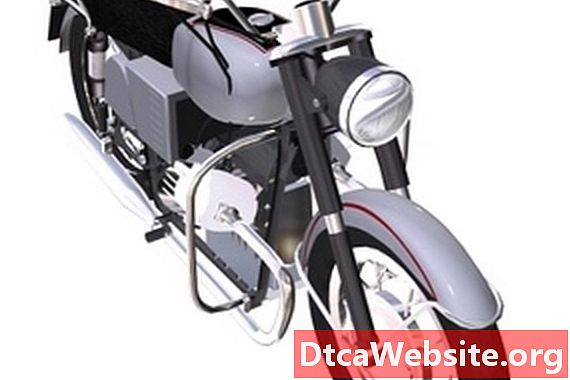
Contenu

Motorcycle gas tanks will degrade over years of use due to weather, water left to sit in the tank or poor maintenance. Pin holes made by rust can be temporarily repaired with an epoxy, but larger holes, from punctures or deep rust, should be repaired by a professional or replaced with a new tank. Gas tanks are highly flammable, even after cleaning them. Work on the tank away from sources of heat or flame to avoid injury.
Step 1
Disconnect then remove the tank from the bikes frame. Drain out any remaining gas, oil or other liquid. Add one pint of lacquer thinner to the tank, then rotate and roll the liquid around in the tank to coat the interior. Pour out and dispose of the excess liquid. Set the tank out to dry completely.
Step 2
Rough up the interior of the tank and knock off any loose rust. Put a handful of drywall screws into the tank and shake them around vigorously for two minutes. This will remove loose rust and grime as well as improve the adhesion of the epoxy.
Step 3
Cover any pin holes with duct tape and use putty to plug all the outlet ports. The outlet ports are the holes in the tank where hoses lead to the engine.
Step 4
Prepare the epoxy as directed by the packaging instructions. Mix both parts of the epoxy thoroughly in a plastic container.
Step 5
Repair the holes in the tank with the epoxy. Pour the epoxy into the tanks fuel fill hole. Immediately cover the hole with plastic wrap secured with a rubber band around the mouth. Swill the epoxy around the tank for two minutes to allow it to cover and fill any cracks or holes.
Step 6
Remove the plastic wrap and pour the excess epoxy out of the hole. Move the tank around for an extra minute or two to keep any excess epoxy from building up unevenly in one spot. Dry the tank upside down for five minutes.
Remove the putty from the outlet ports. After one hour, remove the duct tape and use a pocketknife to scrape off any epoxy that has oozed out onto the exterior of the tank. Place the tank in a warm location and allow it to cure for at least 24 hours.
Warning
- Test the tank for leaks. Failure to do so may result in injury or further damage to the motorcycle. Fill the gas tank with water and allow it to sit. Look for any signs of seepage. Dry the tank out completely after testing before reassembling on the motorcycle and filling with fuel.
Items you will need
- Lacquer thinner
- 15 to 20 drywall screws
- Duct tape
- Putty or childrens modeling clay
- Two-part epoxy
- Mask
- Plastic disposable container
- Stir stick
- Plastic wrap
- Rubber band
- Pocketknife


